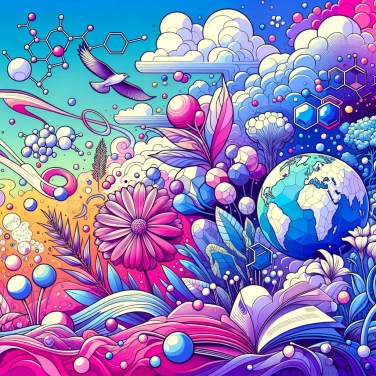Salt crystals easily form in natural salt pans because the water evaporates, leaving salt crystals behind. This process is accelerated in hot and dry environments, promoting salt crystallization.

In natural salt pans, seawater or water from a saline spring accumulates and becomes trapped in natural basins. Under the action of the sun and heat, this water gradually evaporates, but the minerals, especially salt (sodium chloride), obviously do not evaporate. As a result, the salt concentration increases progressively, sometimes reaching ultra-high levels that significantly facilitate the formation of salt crystals. The more the water disappears, the more saturated it becomes with salt, and at a point, it can no longer keep everything dissolved: that is when crystals form spontaneously.
The principle of the phenomenon is very simple to understand: when the water from the salt flats evaporates under the effect of the sun and the wind, there is less and less water for the same amount of salt. Gradually, the concentration of salt increases until a limit is reached, the saturation. At that precise moment, the water can no longer keep as much salt dissolved in it, and it begins to form small solid crystals that precipitate naturally. These crystals gradually grow by attracting other salt particles due to their regular structure, naturally forming the square or cubic crystals that we all recognize.
When saltwater is exposed to intense heat and sunlight, it evaporates quickly. As only the water disappears as vapor, the salt remains in place, gradually concentrating. This phenomenon accelerates the formation of salt crystals: the hotter and drier it is, the faster the salt molecules will precipitate (gather into solid crystals). In short, if the water quickly makes its escape, the salt will stay in place and easily form well-visible crystals.
Climates that are both hot, dry, and well sunny significantly promote the appearance of salt crystals. The heat combined with sunlight leads to a rapid evaporation of salty water, which boosts the precipitation of salt. When water evaporates quickly, the salt becomes highly concentrated and naturally ends up forming these small crystals visible to the naked eye. A regular pattern of very hot days followed by cooler nights can also accelerate the crystallization process by facilitating the necessary balance between saturation and saline precipitation. In these places, the dry air also plays a useful role by easily absorbing moisture, further speeding up this phenomenon.
Natural salt flats often have flat and impermeable soils, generally composed of clay or other fine sediments. This type of terrain retains water on the surface, facilitating evaporation and thus the rapid formation of crystals. Sometimes, the rock present at shallow depth already contains a good amount of mineral salts, which further increases the salt concentration. Furthermore, salt flats are often found in topographic depressions or shallow basins, limiting water circulation and renewal, thereby helping to accumulate and concentrate salt on site.
The ancient Romans used salt as a medium of exchange, which is where the term 'salary' originates from, derived from the Latin 'salarium', meaning allowance for salt.
The salt harvested from natural salt pans is often rich in minerals such as magnesium, calcium, and potassium, giving it nutritional and taste properties that surpass those of regular refined salt.
The pink flamingos get their characteristic pink color from their diet, which is rich in small crustaceans and algae found in the brackish waters of natural salt flats.
Some natural salt marshes are now protected ecological reserves because they are home to many rare plant and animal species adapted to extremely salty environments.
Ideal locations typically feature a warm, dry climate with abundant sunshine, along with a large, shallow saline water source, combined with a topographical configuration that allows for efficient evaporation.
Sea salt comes from the natural evaporation of seawater in salt pans, typically retaining a greater variety of minerals. Rock salt, on the other hand, is mined from underground deposits formed by the evaporation of ancient lakes or seas and may exhibit differences in its mineral composition.
High temperatures increase the evaporation rate of water, leading to a rapid saturation of the saline solution. This accelerates salt crystallization by facilitating the quick precipitation of solutes in the form of crystals.
Although generally very pure, the salt crystals obtained from natural saltworks often contain small amounts of other minerals, trace elements, or impurities from the natural environment, such as calcium, magnesium, or even some organic matter.
Due to the specific atomic structure of sodium chloride (NaCl), salt crystals naturally arrange themselves in a cubic geometry. This stable arrangement maximizes the electrical attraction between sodium and chloride ions.

No one has answered this quiz yet, be the first!' :-)
Question 1/5